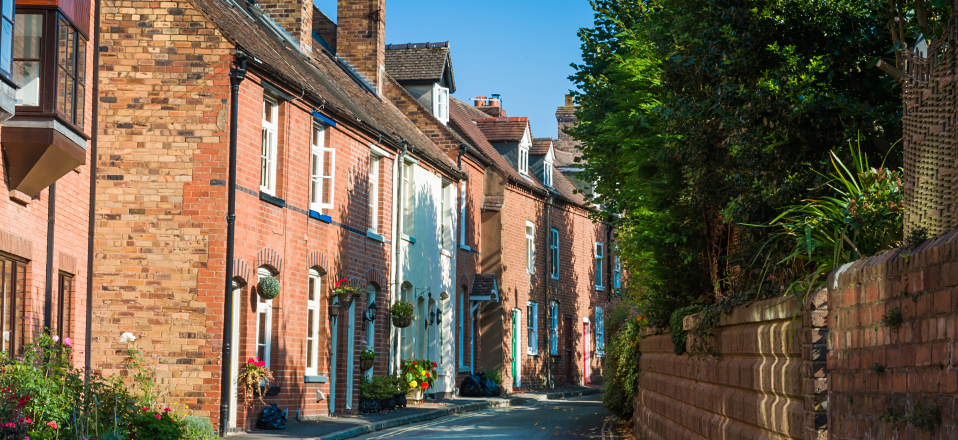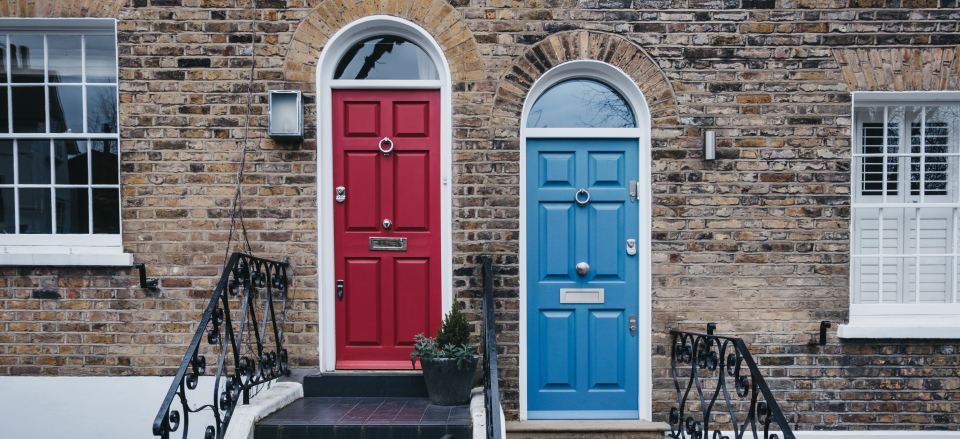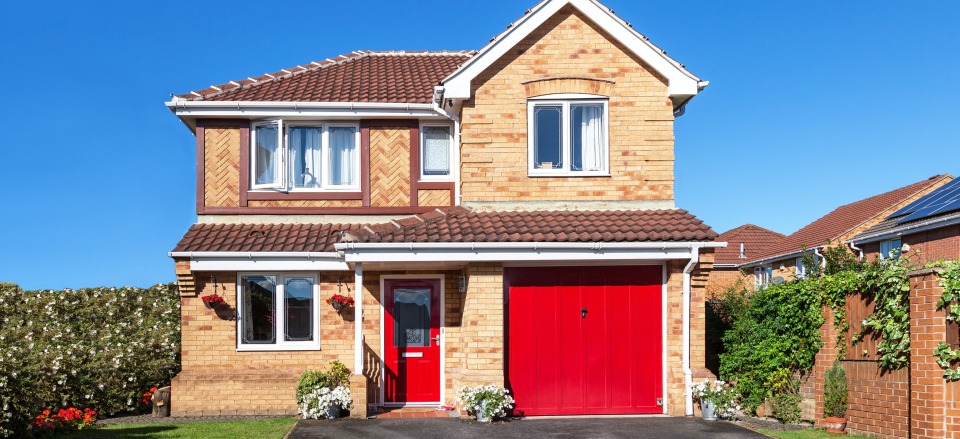Revealed: the buyers that are set to dominate the housing market in 2021
The pandemic is fuelling a reversal of fortunes for first-time buyers and homeowners, according to our latest House Price Index.
First-time buyers are set to be overtaken by homeowners as the driving force of housing sales next year.
Despite a jump in first-time buyer appetite when the English housing market re-opened in mid-May, demand has tapered off over the last two months, according to our latest House Price Index.
Although first-time buyer interest in stepping onto the housing ladder remains well above 2019 levels, it has now settled back to pre-pandemic levels – and is set to soften further into 2021.
Meanwhile, homeowners were slower to respond immediately after lockdown lifted, but their appetite to move house is 37% higher than pre-pandemic levels and a whopping 53% higher than this time last year.
This reversal will take time to feed through in the housing market – but the gap between mortgaged homeowner and first-time buyer activity is likely to widen further into 2021.
Why is first-time buyer appetite starting to lag?
First-time buyers have been the driving force of the housing market over the last decade, bolstered by the government’s Help to Buy scheme and greater availability of high loan-to-value (LTV) mortgages.
And in 2019, first-time buyers overtook mortgaged homeowners as the most dominant buyer in the housing market.
But restricted mortgage availability, tighter lending criteria and growing economic uncertainty as a result of the pandemic are taking their toll on first-time buyer appetite – and their ability to snap up a home.
Is it the same across the UK?
First-time buyer appetite in September has grown the least in London (1.8%), Yorkshire and the Humber (4.8%) and north west England (9.7%) when compared with the first three months of the year.
By comparison, homeowner interest in moving home has jumped 83.5% in Scotland, 66.2% in the east of England and 65.8% in the south east.
Going forward, it is the regions outside southern England where first-time buyer demand is set to be most impacted, reflecting aspiring homeowners' reliance on high loan-to-value mortgages, particularly at or above 90% LTV.
But London, where high loan-to-value loans are limited to buyers on high incomes or with large deposits, is not immune to changes in lending constraints.
And a greater proportion of first-time buyers in London may turn their attention to commuter areas to purchase their first home.
So why are more homeowners interested in moving?
Homeowners have accounted for an increasingly smaller share of housing sales in the last 10 years, as they stayed put and gradually paid off their mortgages.
But they’ve become more active in the housing market since restrictions lifted, fuelled by the search for more space and a once-in-a-lifetime re-evaluation of housing requirements.
With many homeowners having either no mortgage or a small loan, they also have an equity advantage over other buyers, in particular those stepping onto the housing ladder.
In fact, three quarters of homeowners are over 45 years old and more than half are mortgage-free, so they can potentially make the move as cash buyers.
Richard Donnell, research and insight director at Zoopla, said: “A change in the mix of buyers is supporting market conditions with sustained demand from equity-rich homeowners seeking more space and a change in location.
“In contrast, first-time buyer demand is weakening. First-time buyers have been a driving force of housing sales over the last decade.
"They remain a key buyer group but lower availability of higher loan-to-value mortgages and increased movement by existing homeowners means a shift in the mix of buyers into 2021.”
House building levels nosedive 62% during lockdown
The number of homes being built between April and June plunged as work on building sites was suspended.
The coronavirus pandemic led to a 62% fall in the number of new homes being built in England between April and June.
Only 15,950 new-build properties were finished during the three months, the lowest level since records began in 2000, according to the Ministry of Housing, Communities and Local Government.
It follows a 5% drop in building levels during the first three months of the year, which ended a seven-year period in which the number of new properties being built had been steadily increasing.
Brand new properties already sell for a significant premium compared with homes that are being re-sold, and the fall in building levels is likely to put further upward pressure on prices.
Why is this happening?
Work on construction sites was suspended in March when the UK entered lockdown in response to coronavirus.
When work was able to resume, sites opened in phases and builders had to observe social distancing measures, which reduced the speed at which properties could be built.
But with the UK now facing a second wave of coronavirus and employees once again being told to work from home where possible, construction workers have been given permission to continuing working as normal.
Who does it affect?
While the slowdown in building levels is bad news for anyone hoping to buy a new-build home, it has been particularly stressful for people planning to use the government’s Help to Buy initiative, which ends in its current form on 31 March 2021.
In order to qualify for the 20% equity loan, the property being bought through the scheme originally had to have been built by the end of December.
But the government has since extended the deadline for construction until 28 February 2021 to ensure people do not miss out as a result of building delays caused by the pandemic.
The current version of Help to Buy will be replaced by a new scheme, which is limited to first-time buyers, on 1 April 2021.
What’s the background?
A total of 147,180 new homes were built in the year to the end of June, 15% fewer than during the previous 12-month period.
But construction is only one way in which homes are added to the housing stock, with residential properties also created through the conversion of agricultural and industrial buildings, as well as dividing up large houses into smaller units.
Government figures show an overall increase of 243,720 homes in England during the period, at the lower end of the range of between 240,000 and 340,000 new homes that are needed each year to keep pace with demand.
Top three takeaways
- The coronavirus pandemic led to a 62% fall in the number of new homes being built between April and June
- Only 15,950 new-build properties were finished during the three months - the lowest level since records began in 2000
- The deadline for Help to Buy has been extended to ensure people do not miss out as a result of building delays
Mortgage approvals soar to 13-year high
A combination of pent-up demand and the stamp duty holiday pushed home loan approvals up in August.
Mortgage approvals soared to a near 13-year high in August as the scramble to buy homes continued.
The number of mortgages given the green light hit their highest level since October 2007 as a result of pent-up demand following lockdown and the government’s stamp duty holiday.
A total of 84,700 mortgages were approved in August, a 28% increase on the previous month’s total, according to the Bank of England.
David Ross, managing director, Hometrack, said: “Today’s report confirms the bounce back in mortgage approvals for house purchases that Hometrack identified during August. We have seen continued growth in applications during September showing that demand remains high at approximately 30% up on a year ago.
“At the same time, we are seeing signs of softening of demand from first-time buyers with 20% fewer applications for mortgages requiring less than a 15% deposit in September when compared to August.
"This is potentially affected by reducing availability of low deposit mortgages but has been offset by strong demand amongst home movers and higher equity applicants."
Why is this happening?
A number of factors have combined to produce August’s strong figure for mortgage approvals for house purchase.
On the one hand, demand that built up during the weeks that the housing market was closed is continuing to work through the system.
At the same time, lockdown itself has prompted people who were previously happy to stay put to consider moving, after finding their current home did not meet their needs during lockdown.
The government’s stamp duty holiday, under which stamp duty is waived on homes costing up to £500,000 until 21 March 2021, has provided a further boost to the market.
The holiday was announced on 8 July, so August is the first full month for which it is reflected in the figures.
Finally, August is traditionally a quiet month for the property market as people put moving plans on hold while they go on holiday, but with travel restrictions this summer meant many people did not go away, and instead got on with a house purchase.
Who does it affect?
The fact that the housing market is so buoyant is good news all round.
Prior to the coronavirus pandemic, property transaction levels had been held back by a shortage of homes for sale.
The situation created a vicious circle for the housing market, with existing homeowners delaying listing their property because of a lack of choice for their next home.
The current high level of activity in the market indicates this issue has now been overcome.
It is also significant that mortgage approvals for house purchase have reached their highest level since the global financial crisis, as this suggests despite concerns about economic uncertainty and rising unemployment, banks and building societies are still happy to lend on homes.
What’s the background?
The number of mortgages approved for house purchase so far this year is still below the figure for the same period of 2019, suggesting the current boom in demand could have further to run.
A total of 418,000 loans have been approved for people buying a property so far this year, compared with 524,000 in the first eight months of 2019.
But approvals for people remortgaging are less buoyant, with only 33,400 new loans agreed for people switching deals in August, broadly unchanged since July and 36% lower than in February.
Ross added: “With continued uncertainty due to upcoming changes to income support and the effect of ending the stamp duty holiday, volatility will continue in the market.
"Demand is likely to soften, potentially with a demand spike ahead of the end, meaning lenders will need a continued focus on risk.”
Top takeaways
- Mortgage approvals soared to a near 13-year high in August
- A total of 84,700 mortgages were approved during the month - the highest level since October 2007
Cost of moving home drops by nearly 40% - but costs go up for first-time buyers
The government’s stamp duty holiday has driven a steep drop in the costs associated with moving house. But moving costs have risen for first-time buyers.
The cost of moving home has nosedived 39% this year for the majority of movers.
The steep decline can be explained by the stamp duty holiday announced by the government in July, saving buyers an average of more than £4,200.
A typical homemover now spends £6,669 on associated costs, down from £10,911 before the stamp duty holiday was introduced, according to the moving services website reallymoving.com.
The fall in stamp duty costs more than offsets increases in the amount movers paid for other services, such as legal fees, estate agents’ fees, surveys and removals, which have all risen in recent months.
Overall, the cost of moving for an existing homeowner was equivalent to 1.9% of the price of the property they were purchasing, down from 3.6% before the stamp duty holiday.
However, first-time buyers saw the associated cost of moving go up.
Why is this happening?
The stamp duty holiday, which was announced on 8 July and will run until 21 March 2021, saved existing homeowners an average of £5,000.
But legal fees and estate agents’ fees, which are charged as a percentage of a property’s value, both increased as house prices rose.
Estate agents’ fees were 14% more expensive than before the stamp duty holiday was announced at an average of £3,936, while legal fees increased by 15% to £1,682.
There was also a 10% increase in the cost of a survey, raising it to £450, and a 3% rise in removals expenses to £546.
The only cost that was unchanged was the price of an Energy Performance Certificate at £55.
Who does it affect?
Unsurprisingly, moving costs vary significantly across the UK.
London is the most expensive place in which to trade up the property ladder, with the associated costs averaging £12,061, although this total is less than half the £25,255 paid before the stamp duty holiday.
The South East is the second most expensive place in which to move home at £7,457, followed by the South West at £6,640.
At the other end of the scale, moving costs in Northern Ireland average just £4,356, only £1,085 less than before the stamp duty holiday was introduced, while in the North East they are £4,659, a reduction of only £958.
What’s the background?
While existing homeowners saw their moving costs fall, first-time buyers, who were already exempt from paying stamp duty on the first £300,000 of a property purchase, saw their moving costs increase.
The typical first-time buyer now spends an average of £1,795 on the associated costs of moving, 8% more than before the stamp duty holiday was announced.
Moving costs for people purchasing their first home have risen in all regions of the country except London, where they fell from £6,730 to £2,218, and the West Midlands where they dropped by £42 to average £1,520.
Unsurprisingly, London has the highest moving costs for first-time buyers, while Scotland has the lowest at an average of £1,199.
Top three takeaways
-
The cost of moving home has dived by 39% due to the stamp duty holiday, saving buyers an average of more than £4,200
-
The typical person trading up the property ladder now spends £6,669 on associated costs, down from £10,911 before the stamp duty holiday
-
The fall in stamp duty costs more than offset increases in the amount people paid for other services, such as legal fees, estate agents’ fees, surveys and removals.




